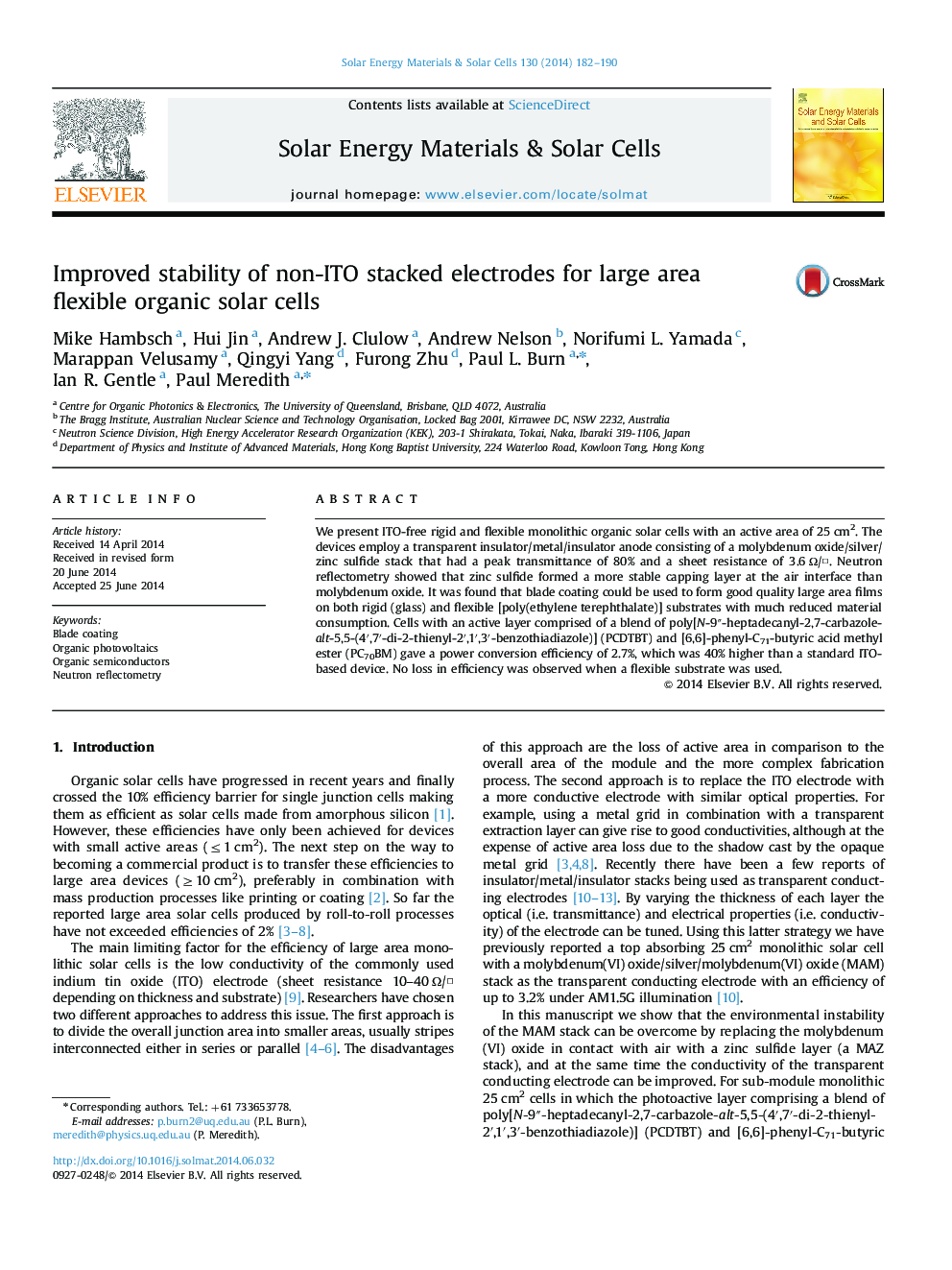| Article ID | Journal | Published Year | Pages | File Type |
|---|---|---|---|---|
| 6535543 | Solar Energy Materials and Solar Cells | 2014 | 9 Pages |
Abstract
We present ITO-free rigid and flexible monolithic organic solar cells with an active area of 25 cm2. The devices employ a transparent insulator/metal/insulator anode consisting of a molybdenum oxide/silver/zinc sulfide stack that had a peak transmittance of 80% and a sheet resistance of 3.6 Ω/â¡. Neutron reflectometry showed that zinc sulfide formed a more stable capping layer at the air interface than molybdenum oxide. It was found that blade coating could be used to form good quality large area films on both rigid (glass) and flexible [poly(ethylene terephthalate)] substrates with much reduced material consumption. Cells with an active layer comprised of a blend of poly[N-9â³-heptadecanyl-2,7-carbazole-alt-5,5-(4â²,7â²-di-2-thienyl-2â²,1â²,3â²-benzothiadiazole)] (PCDTBT) and [6,6]-phenyl-C71-butyric acid methyl ester (PC70BM) gave a power conversion efficiency of 2.7%, which was 40% higher than a standard ITO-based device. No loss in efficiency was observed when a flexible substrate was used.
Related Topics
Physical Sciences and Engineering
Chemical Engineering
Catalysis
Authors
Mike Hambsch, Hui Jin, Andrew J. Clulow, Andrew Nelson, Norifumi L. Yamada, Marappan Velusamy, Qingyi Yang, Furong Zhu, Paul L. Burn, Ian R. Gentle, Paul Meredith,
